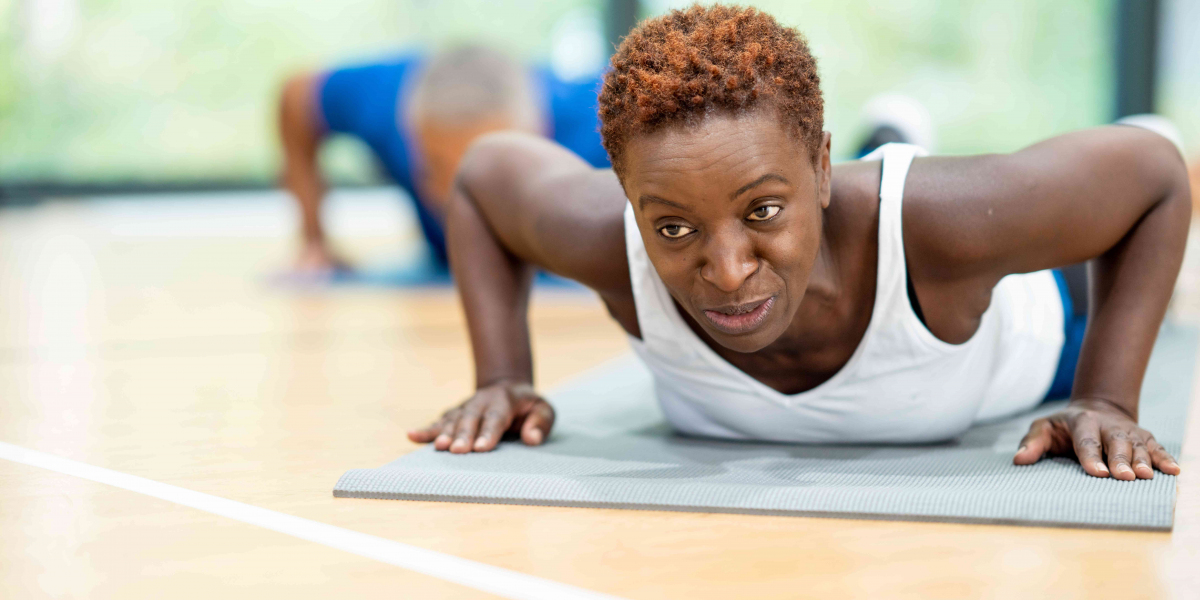Glute Bridge
Choosing Your Equipment
The glute bridge can be done using just your body weight, a weight plate, or a barbell, depending on your strength and training experience. For beginners, especially women, it's common to start with the bridge without any weights. This helps you feel the muscles in your buttocks working while also learning how to coordinate your core, hamstrings, and glutes. It's best for everyone to start mastering this exercise without extra weights.
You can begin by performing the glute bridge from the floor, but as you progress, you might want to use a higher surface, like a bench at the gym. If you're at home, you can lean against a wall. This exercise is quite flexible and can be done in various settings.
For those with more experience, a good method is to hold a weight plate over your pelvis and lower abdomen. Make sure to keep the weight steady with your hands throughout the exercise.
How to Perform the Glute Bridge
Starting Position:
For this version, you'll be using a horizontal bench. Lie flat on your back on the floor, keeping your back arched naturally.
Place one foot on the edge of the bench. Ensure your legs are positioned closely together, with your shins nearly parallel and not angled outward, as some sources might suggest.
Keep your knee angle at no more than 90 degrees. This is important to avoid shortening the movement because of the hamstrings.
Rest your arms on the floor beside you, palms facing down and reaching toward your legs. The other leg should be bent at the knee and lifted slightly into the air.
Look straight up and check your starting position. Your buttocks, palms, and upper back (shoulder girdle) should be touching the floor. Take a deep breath and tighten your abdominal muscles.
Main Movement:
As you exhale, squeeze your buttocks and lift your pelvis up. Use the extended leg as your support while the other leg remains in the air.
Raise your torso until your body forms a straight line from your quadriceps (front thigh) to your torso.
At the highest point of the lift, squeeze your glutes even more to maximize the contraction and load on those muscles.
To increase the difficulty, you can lift your supporting leg onto your toes. However, it's recommended that beginners stick to the basic movement without adding this complexity.
Reverse Movement:
Slowly and carefully lower your pelvis back down until it almost touches your thighs. Relax your glutes and abs.
Begin your next repetition immediately without placing your free leg on the floor. While one leg works dynamically, the other stays engaged statically, acting as resistance.
Complete all repetitions on one leg before switching to the other. If you’re using weights, you can do the exercise with both legs at the same time or alternate between left and right.
Tips and Variations:
The glute bridge is a popular exercise that is easy to perform without weights and provides an adequate load for all fitness levels. However, if your goal is to build strength and improve the shape of your buttocks, you might want to try a different version of the glute bridge.
For this variation, use a barbell and a towel or roller for comfort. Place the barbell just above your hips (below your stomach), and lean your back against the bench as if you're about to perform a dumbbell pullover. Position your feet on the floor so your knees form a 90-degree angle, with your buttocks nearly touching the ground. You’ll keep your balance by having your back supported by the bench.
With a strong, explosive effort, lift your pelvis as high as possible. Squeeze your glutes at the top for a couple of seconds, then slowly lower back down without letting your buttocks touch the floor. Start with a lighter weight, like a barbell pancake, before moving to a heavier barbell. This method creates the ideal conditions for targeted glute training.
Common Mistakes:
Using the wrong starting position or weight can hinder your results. If you want to do bodyweight glute bridges, use a high surface for your footrest. If you’re using a heavy barbell, your legs should be positioned lower so your hamstrings can also engage along with your glutes. Light weights may work in the first case, but they’re more of an exception than a rule.
Summary
The glute bridge is one of the most underrated exercises for strengthening the buttocks. Many people tend to focus on leg swings or lunges, which are not as effective as the glute bridge. Incorporating the glute bridge into your workout routine can yield significant benefits. For men, this exercise is helpful for enhancing the final stages of squats and deadlifts, while for women, it's a great way to tone and improve the appearance of the buttocks









